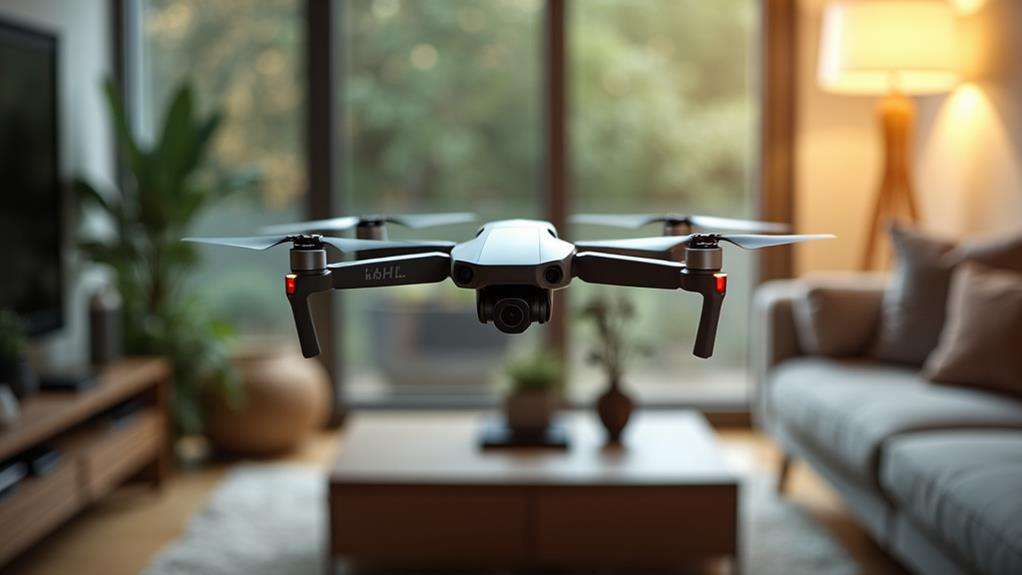Inside the Anatomy of a Drone: Components and Functions
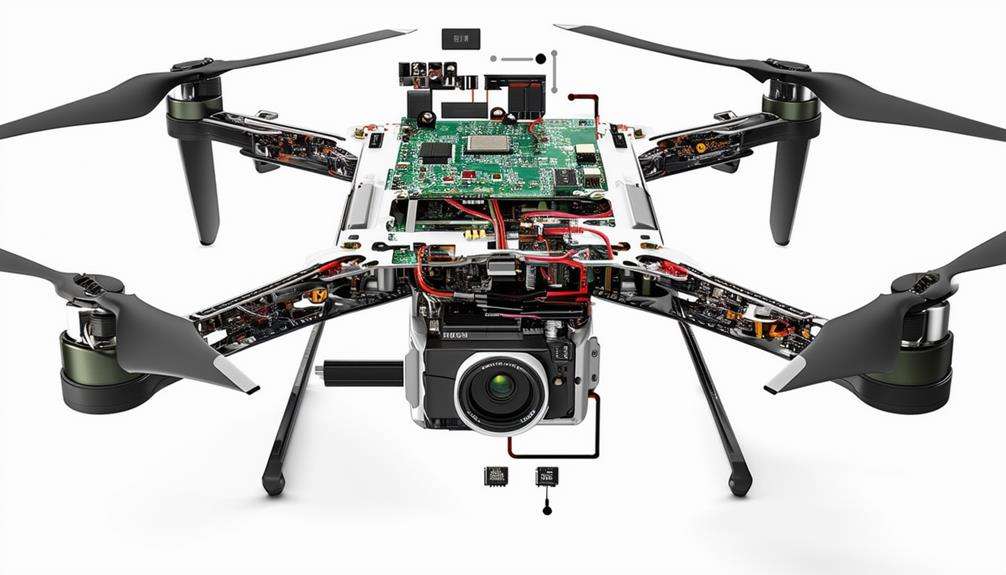
When thinking about drones, it's tempting to focus solely on their sleek design and impressive flight capabilities. However, understanding the internal components—such as propellers, motors, the frame, battery, and camera—can offer a deeper appreciation of how these machines operate.
Each part plays a crucial role in enabling the drone to fly, capture footage, and maintain stability in the air. Curious about how these elements interact to create a seamless flight experience? Let's delve into the intricacies of each component and its specific function.
Propellers
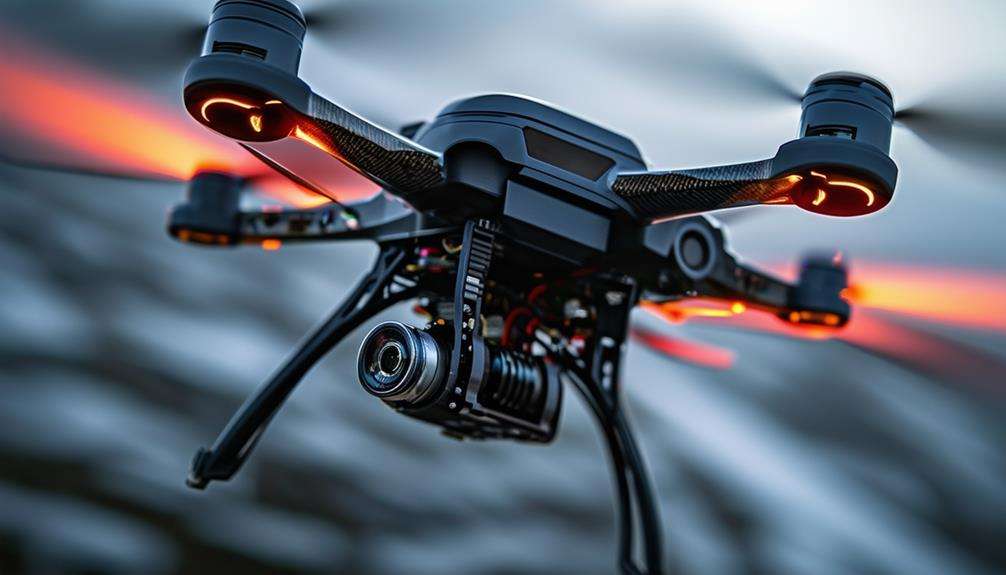
Propellers are crucial for generating the lift and thrust that keep your drone airborne. They come in various sizes and materials, including plastic, carbon fiber, and wood, each influencing performance differently. For instance, carbon fiber propellers are lightweight yet strong, enhancing efficiency and durability. Larger propellers typically provide more lift but demand more power.
Pitch angles also significantly affect performance. A higher pitch angle allows for faster speeds but may compromise stability and efficiency, while a lower pitch angle offers better stability and efficiency at the cost of speed. The number of blades impacts lift and thrust as well. Quadcopters, for example, usually have four blades, providing balanced lift suitable for both recreational and professional uses.
Maintaining your propellers is vital for optimal performance and flight safety. Regularly inspect for wear and tear, and replace any damaged propellers to prevent in-flight failures. Keep them clean to avoid obstructions that could affect lift and thrust. Attention to these details will optimize your drone's efficiency and performance.
Motors
Motors are the powerhouse of your drone, converting electrical energy into the mechanical energy needed to rotate the propellers. Drone motors, particularly brushless motors, are essential for ensuring efficiency and durability. These motors are known for their high efficiency and longer lifespan compared to brushed motors.
When selecting motors, you'll encounter different specifications that impact performance. Key factors include stator size, kv rating, number of poles, and winding type. The stator size refers to the motor's internal diameter and height, affecting torque and speed. The kv rating indicates the revolutions per minute (RPM) the motor will achieve per volt applied; higher kv ratings result in higher speeds but lower torque.
Here's an overview of key motor specifications:
| Specification | Description |
|---|---|
| Stator Size | Internal diameter and height of the motor |
| kv Rating | RPM per volt applied to the motor |
| Number of Poles | Affects the smoothness and efficiency of the motor |
High-quality motors with an efficient design can significantly improve your drone's flight time and stability. By choosing the right motors, you can ensure your drone performs optimally, offering longer flights and more stable maneuvering. The right choice of drone motors can greatly enhance your overall flying experience.
Frame
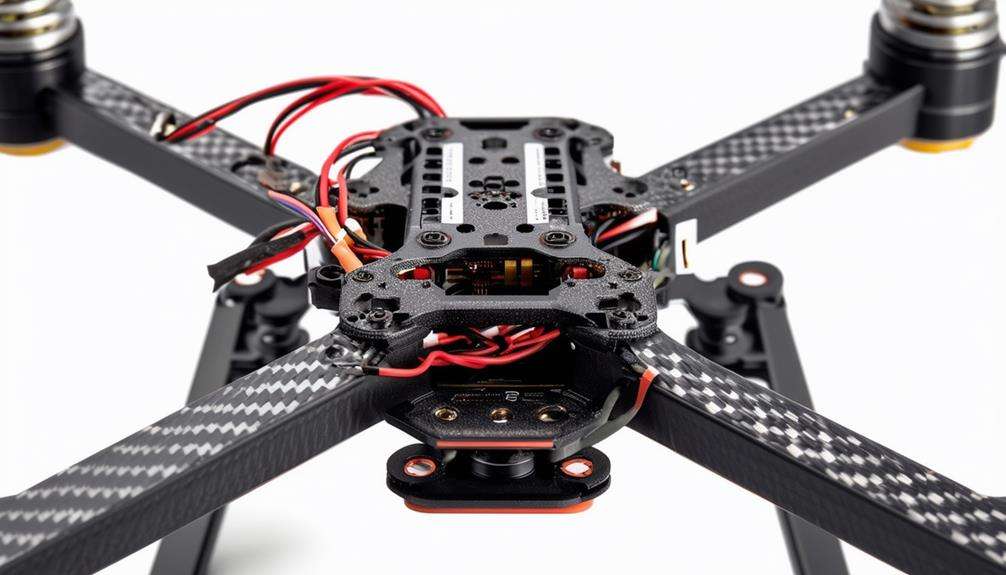
While motors provide the necessary thrust for flight, the frame serves as the backbone of your drone, offering structural support to hold all components together. A well-designed frame is crucial for ensuring the durability and longevity of your drone.
Made from lightweight materials such as carbon fiber or plastic, the drone frame enhances efficiency by reducing overall weight, allowing for longer flight times and improved maneuverability.
The design of the drone frame significantly impacts its performance. A sturdy frame ensures stability during flight, which is essential for capturing clear images or executing precise maneuvers. Frames come in various sizes and shapes, tailored to specific needs and functions. For example, a racing drone might feature a more aerodynamic frame, while a photography drone might prioritize stability and support for heavier cameras.
Durability is another key aspect of a well-designed frame. Carbon fiber frames are highly durable and can better withstand crashes compared to plastic ones. However, plastic frames can still provide adequate support and are often more affordable. Choosing the right drone frame is crucial for maximizing your drone's performance and lifespan.
Battery
Drone batteries, typically Lithium Polymer (LiPo), are the lifeblood of your drone, powering all its components from motors to sensors. These batteries are favored for their high energy density and lightweight properties, making them ideal for aerial devices. The power supplied by LiPo batteries ensures that all essential components, such as motors, flight controllers, and sensors, function seamlessly.
Battery capacity, measured in milliampere-hours (mAh), directly impacts your drone's flight time. Higher capacity means longer flights, allowing you to capture more footage and cover greater distances. Voltage is another critical factor, with most drones operating on either 3.7V or 7.4V batteries, influencing the drone's performance and efficiency. To maintain top battery health, regular checks and proper handling are vital. This ensures the longevity of your battery and safe operations.
Here are some key points to take into account:
- Energy density: LiPo batteries offer a high energy density, providing more power without adding much weight.
- Capacity: Measured in mAh, it dictates how long your drone can stay airborne.
- Voltage: Determines the performance and efficiency of your drone.
- Battery health: Regular maintenance is important for prolonged battery life and safe usage.
Camera
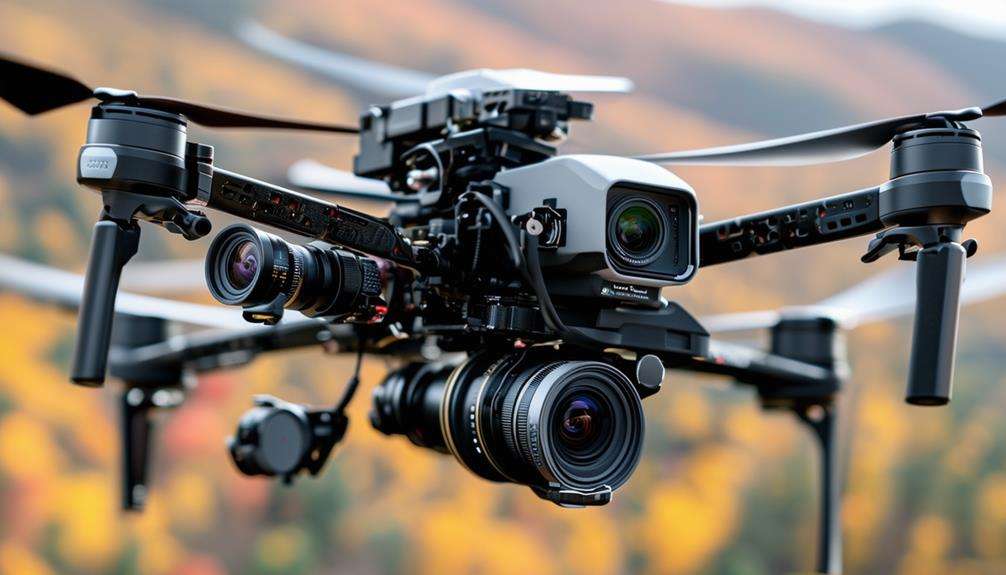
After confirming your drone has a reliable power source, let's delve into the camera, a crucial component for capturing stunning aerial footage and images. The camera on a drone is essential for various applications, including photography, videography, and specialized tasks. High-resolution cameras provide clear and detailed footage, making them ideal for professional use.
To achieve steady and smooth footage, many drones are equipped with camera stabilization systems such as gimbals. These gimbals compensate for the drone's movements during flight, ensuring your shots remain stable despite turbulence or rapid maneuvers. Additionally, some advanced drones feature adjustable camera angles, allowing you to change the perspective of your shots mid-flight, thus offering greater flexibility and creativity in aerial photography or videography.
Thermal cameras are another significant feature that can be mounted on drones. These cameras are particularly useful for search and rescue missions, building inspections, and wildlife monitoring. By detecting heat signatures, thermal cameras can locate missing persons, identify structural issues in buildings, and observe animal activities without disturbing their natural habitat.
Conclusion
Understanding a drone's anatomy allows you to appreciate how its components—propellers, motors, frame, battery, and camera—work together to achieve flight. The propellers and motors generate lift and thrust, the frame provides stability, the battery supplies power, and the camera captures aerial views. By knowing these parts and their functions, you're better equipped to maintain and optimize your drone for a seamless flying experience. Happy flying!

